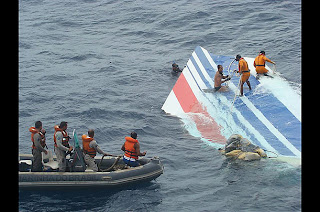Air France 447 crash is turning out to be more of a man vs machine and the perils of too much of automation. Crew skills in airline cockpit are on bane and with crews being exposed to situations never encountered before, the recovery from a situation tends to get more difficult.
Stall series practice every 6 months during recurrent has been order of the day in India when rest of the training systems round the world debated on the benefits of this when the airplane could never be stalled. Now, the order of the day is stall practice with emphasis on high altitude recovery.
Redundancy in automation and recovery by crew and the performance of crew when startled, are bound to affect the recovery and have a direct bearing on whether the aircraft could be saved from a a situation or not.
As STALL has assumed new dimensions in light of AF447 crash,introspection by the training fraternity on other latent safety concerns borne out of automation could well help save potential untoward accidents from taking place.
Stall series practice every 6 months during recurrent has been order of the day in India when rest of the training systems round the world debated on the benefits of this when the airplane could never be stalled. Now, the order of the day is stall practice with emphasis on high altitude recovery.
Redundancy in automation and recovery by crew and the performance of crew when startled, are bound to affect the recovery and have a direct bearing on whether the aircraft could be saved from a a situation or not.
As STALL has assumed new dimensions in light of AF447 crash,introspection by the training fraternity on other latent safety concerns borne out of automation could well help save potential untoward accidents from taking place.




